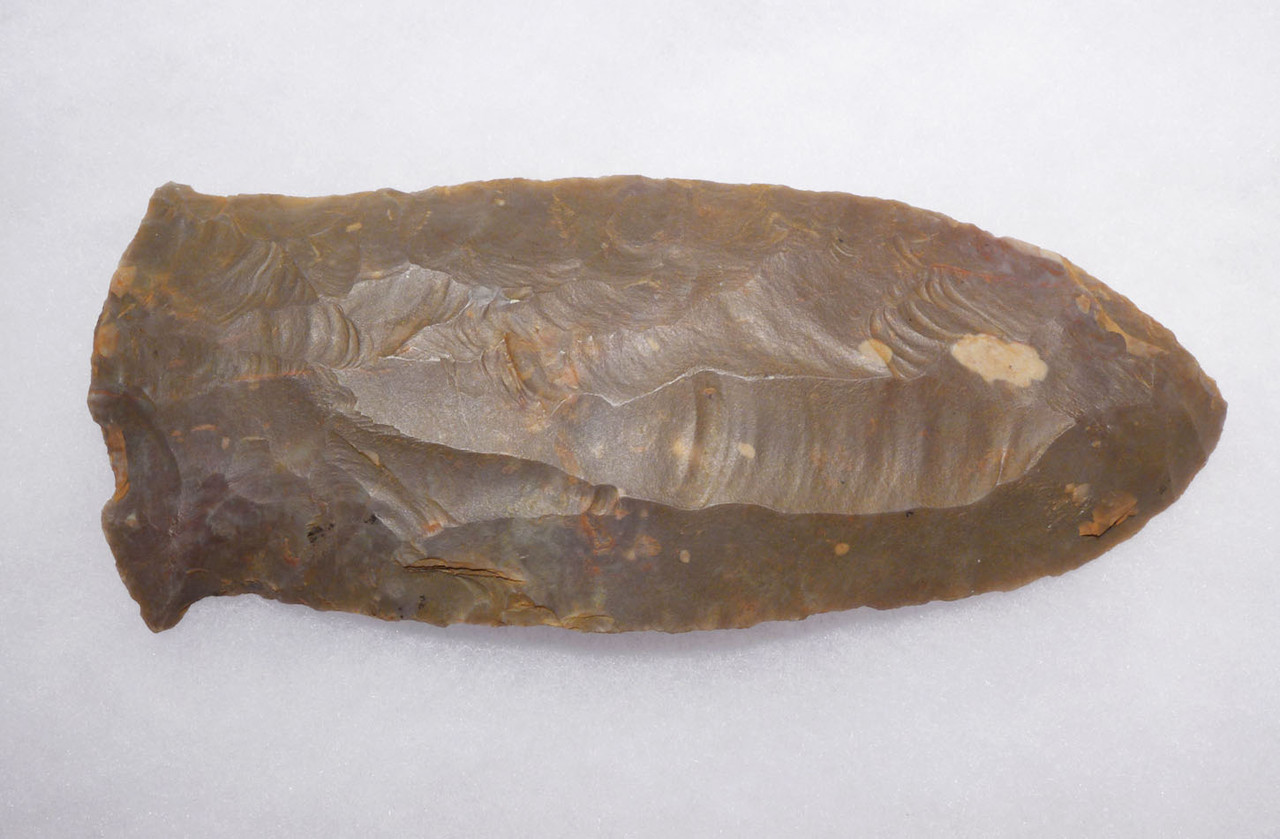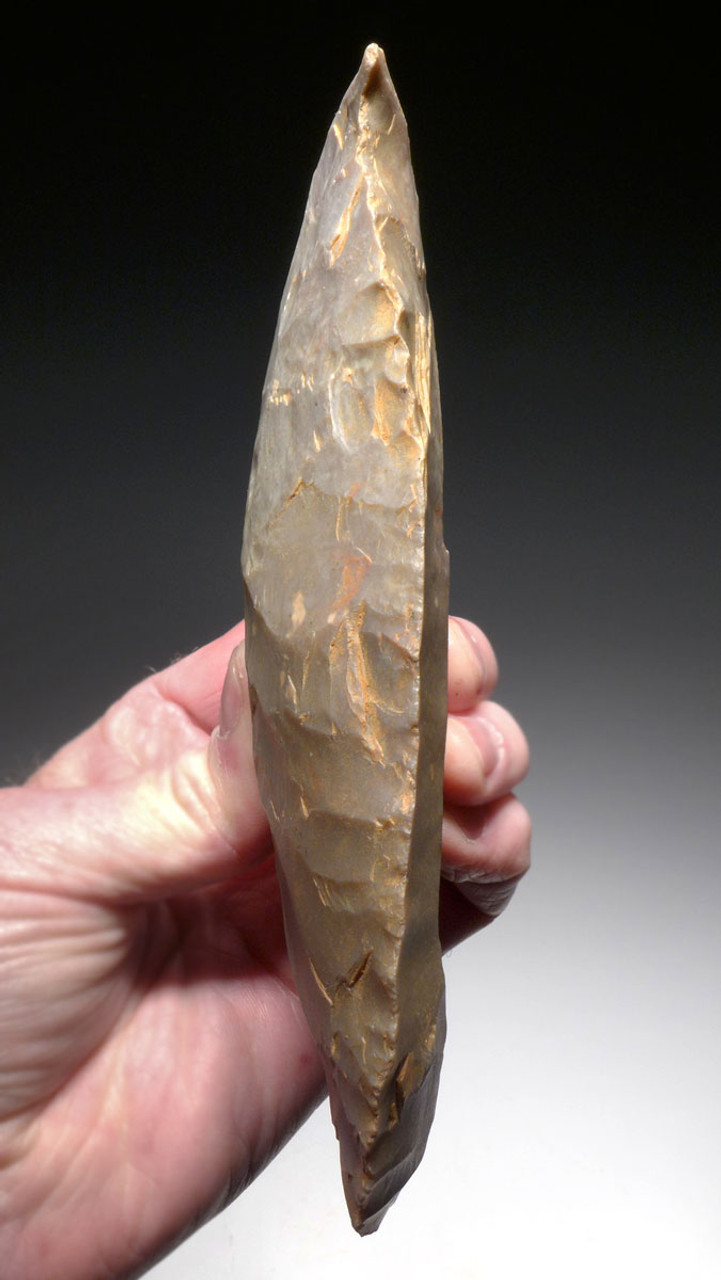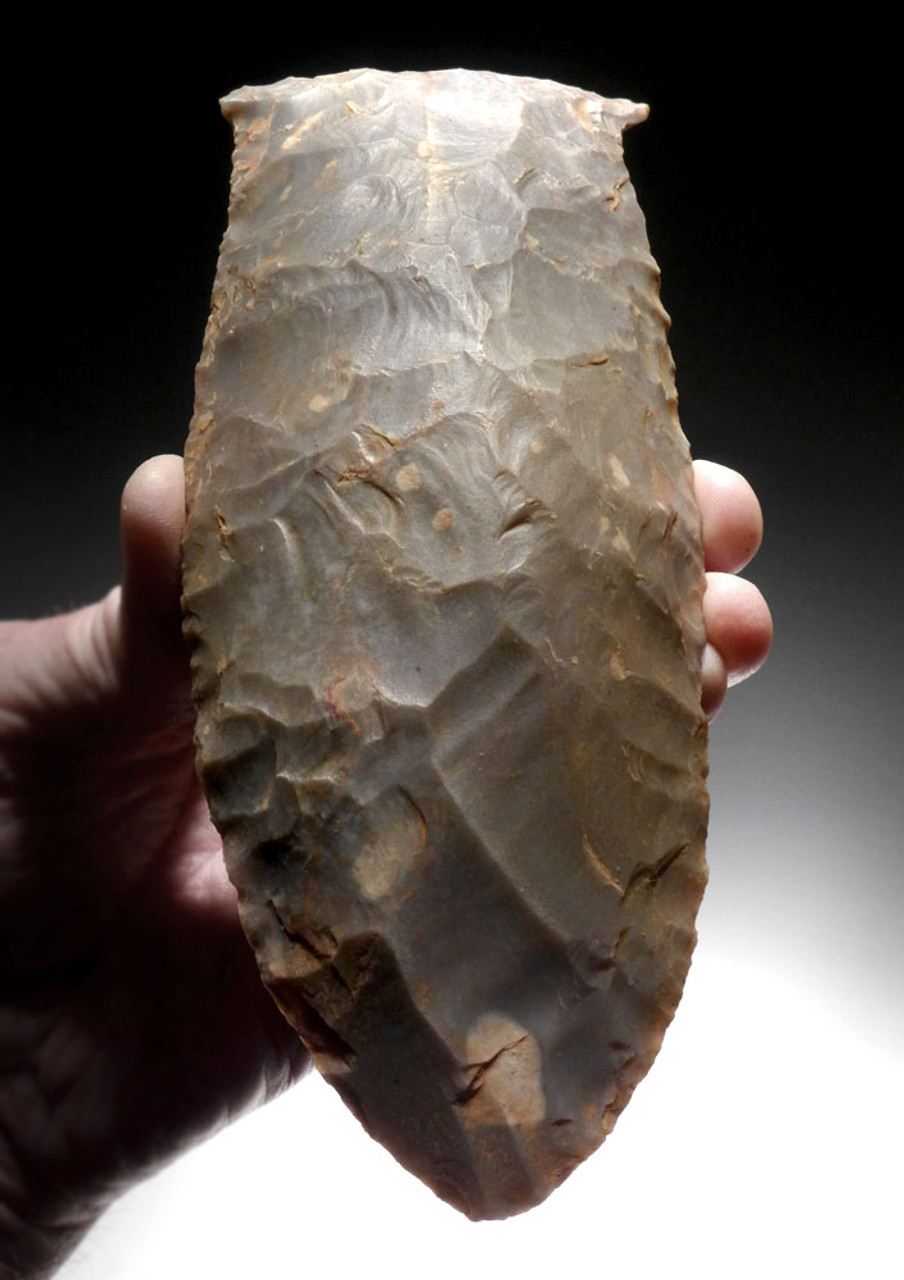Product Description
SEE MORE AFRICAN NEOLITHIC TOOLS AND ARTIFACTS
Noted historical authority, Duncan Caldwell, author of the "Old World Typology and Price Guide" section of all the Overstreets Indian Arrowhead Guide publications, features a flared bit celt axe like this from the African Neolithic (see page 1166, Ninth Edition). In it, he emphasizes the extraordinary rarity of these axes, much different from the bucket-loads of ordinary African Neolithic celt axes. The example he shows is far less impressive than this specimen with much less dramatic flaring of the bit, and on a smaller tapered body without any impressive edge flaking as this one possesses. In that guide dated all the way back to 2005, he appraises these axes from $1900 to $3400, giving some bearing of scarcity to this under-priced, highly impressive example offered here.
The entire perimeter features amazing flaking and masterful shaping from a Neolithic craftsperson at the top of their skill. The "wings" on either side of the bit are very dramatic. The body is of a "turtle back" design - flat on one side and protruding up on the other like a turtle's shell. There is one prehistoric nick to the middle of the bit on one side showing actual ancient use. Modern damage is ruled out by the IDENTICAL patina in this region to the rest of the axe, as well as desert minerals and sediment deep in the hinge fractures of this area - irrefutable signs of extreme age.
This celt axe was the only example of a 20+ year massive dealer collection of the finest rare specimens from this culture. It is also the ONLY single example we have ever seen in person outside of publications! Even the most advanced private or institutional collections can consider this a 'Holy Grail' addition to their inventory! Intact original mineral deposits and patina deep within the flake scars and micro-crevices of the flaking are signs of authenticity and age not found in modern forgeries often seen on the market.
This type axe would have been inserted into a wooden handle and further lashed in place to secure it to the shaft. This Neolithic axe was masterfully fashioned by Neolithic humans between 10,000 and 4,700 years ago. By this period in time, the northern Sahara was nearly devoid of trees as the African Humid Period was ending and the phase of desiccation was underway. An axe of this type with these RARE features indicates that this was a prestige, ceremonial weapon. The use of axes to cut wood became less common compared to the increase in warfare due to a reduction of resources, so the main purpose left for axes of this nature was as a weapon.
 US DOLLAR
US DOLLAR
 EURO
EURO
 AUSTRALIAN DOLLAR
AUSTRALIAN DOLLAR
 CANADIAN DOLLAR
CANADIAN DOLLAR
 POUND STERLING
POUND STERLING
































